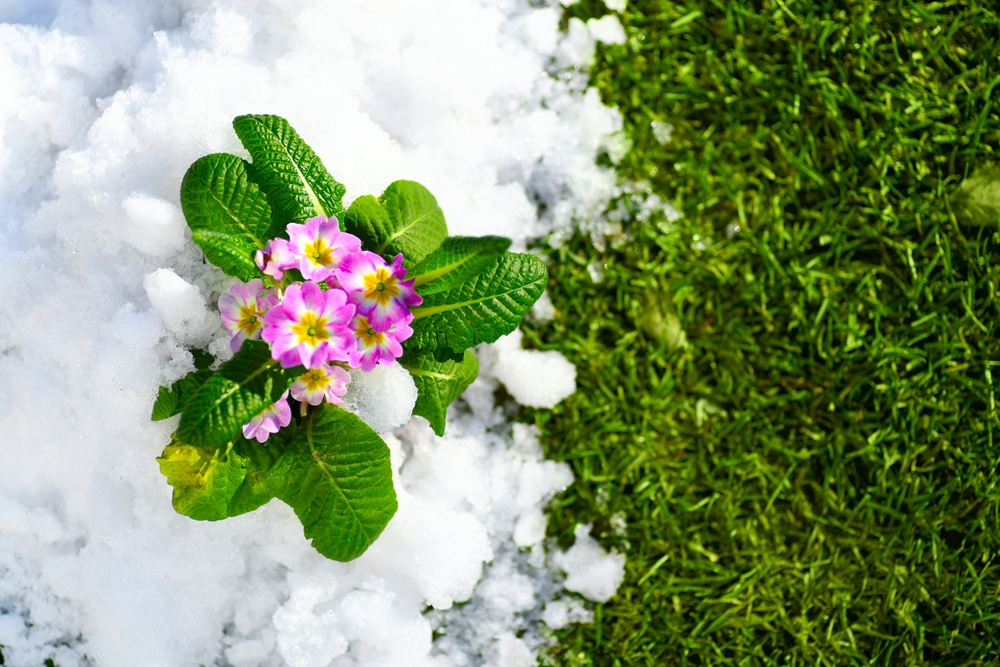
Image Source: Shutterstock.com
Just when the leaves have fallen, the air is crisp, and your grass seems to whisper, “Time to sleep,” most homeowners accidentally sabotage their lawns without even realizing it. It’s the final stretch before winter, and people everywhere think the job is done—tools stored, mower covered, gloves tossed in a bin until spring. But here’s the twist: there’s one overlooked task that determines whether your lawn wakes up lush and green or patchy and bitter in the spring.
This moment, right before winter truly sets in, is the make-or-break phase for your grass, and ignoring it can cost months of recovery. So let’s talk about the mistake everyone makes, why it matters, and how to avoid becoming the neighbor with the sad lawn in April.
Forgetting The Final Cut
The most common mistake homeowners make before winter is skipping the final lawn mowing session. Many believe that once the leaves start falling, the lawn has stopped growing entirely, but that’s rarely the case. Letting the grass stay too long going into winter can create a damp, dense mat that invites mold, pests, and fungal diseases. A properly timed, slightly shorter final cut helps the lawn breathe and survive when the snow arrives. Giving your grass a well-considered trim is like tucking it in for a long, cold nap with the right amount of blankets—not too much, not too little.
Believing The Lawn Is “Done” For The Year
There’s a common misconception that autumn signals the end of lawn care until spring. In reality, the grass roots are still actively growing even after the blades slow down. This is the prime time for strengthening the lawn from beneath the soil, preparing it for winter stress. Homeowners who stop nurturing their lawns too early miss a critical window of development. Treating fall as the finish line instead of the most strategic stage is a mistake that almost guarantees a weaker lawn come spring.
Skipping The Winterizing Fertilizer
Another massive mistake involves ignoring the need for a winterizing fertilizer blend. While it may feel unnecessary to feed something that’s about to go dormant, the opposite is true. Winter fertilizer strengthens root systems, boosts carbohydrate storage, and helps grass survive cold, ice, and foot traffic. Skipping this step can leave your grass starved and unable to rebound when temperatures warm up again. Think of winterizing fertilizer as sending your lawn into hibernation with a full pantry, rather than an empty fridge.
Leaving Leaves To Pile And Smother
Leaves look charming scattered across the yard, but ignoring them can lead to trouble. A thick layer of leaves traps moisture and blocks sunlight, inviting mold and suffocating the grass underneath. Some homeowners believe leaves naturally decompose in place, but the reality is that the process is slow and damaging when the layer is too heavy. Mulching or regularly clearing leaves is essential to allow the lawn to breathe. Your grass still needs air circulation and light, even in its slower-growing, colder months.
Watering Too Little Too Soon
It seems logical to cut back on watering as temperatures cool, but many people stop watering too early. Grass still needs hydration right up until the ground freezes. Cutting water too soon deprives the roots of the moisture they need to remain healthy throughout winter. Lawns that enter winter dehydrated are more prone to winterkill and spring bare spots. Watering until the freeze line hits makes a tremendous difference in the resilience of your lawn’s root system.

Image Source: Shutterstock.com
Forgetting To Aerate When It Matters Most
Aerating your lawn in the fall is a decisive step that many homeowners overlook. Compacted soil struggles to absorb nutrients, water, and oxygen—all of which grass needs before winter arrives. When you aerate, you create pathways that let everything the grass needs sink in where it matters most. Skipping this step leaves the lawn stressed right when it should be building strength. Aeration is like loosening a tight belt after a big meal—it gives your lawn room to breathe and process what it needs.
Putting The Mower Away Too Early
There’s something satisfying about storing away lawn equipment for the season, but doing so prematurely is where many go wrong. Grass often continues to grow slowly into late fall, which means your lawn still needs attention. If you put the mower away after the first cold day, the grass may become uneven and too long. This overgrowth traps moisture beneath snow and ice, turning into a breeding ground for mold and disease. Keeping the mower out just a little longer makes all the difference.
Don’t Let Winter Steal Your Spring Shine
Your lawn’s success in spring starts in the final weeks before winter arrives. The biggest mistake homeowners make is assuming the work is done too soon, leaving the lawn vulnerable to cold damage, disease, and patchiness. With just a few well-timed actions—especially that crucial final cut—you can protect your lawn and set it up for greener, healthier days ahead. Your spring self will thank your fall self endlessly.
Have you experienced a spring surprise from a forgotten fall lawn task? Share your stories, questions, or tips in the comments below.
You May Also Like…
- Stop Raking! Why Leaving the Leaves Might Save Your Lawn
- 7 Fall Fertilizing Tips That Prevent Lawn Damage
- Why Your Lawn Shouldn’t Be Ignored This Season
- Cold Frame Magic: How to Keep Growing Fresh Veggies Through Winter
- 9 Shrubs With Berries Birds Rely on in Winter
Leave a Reply